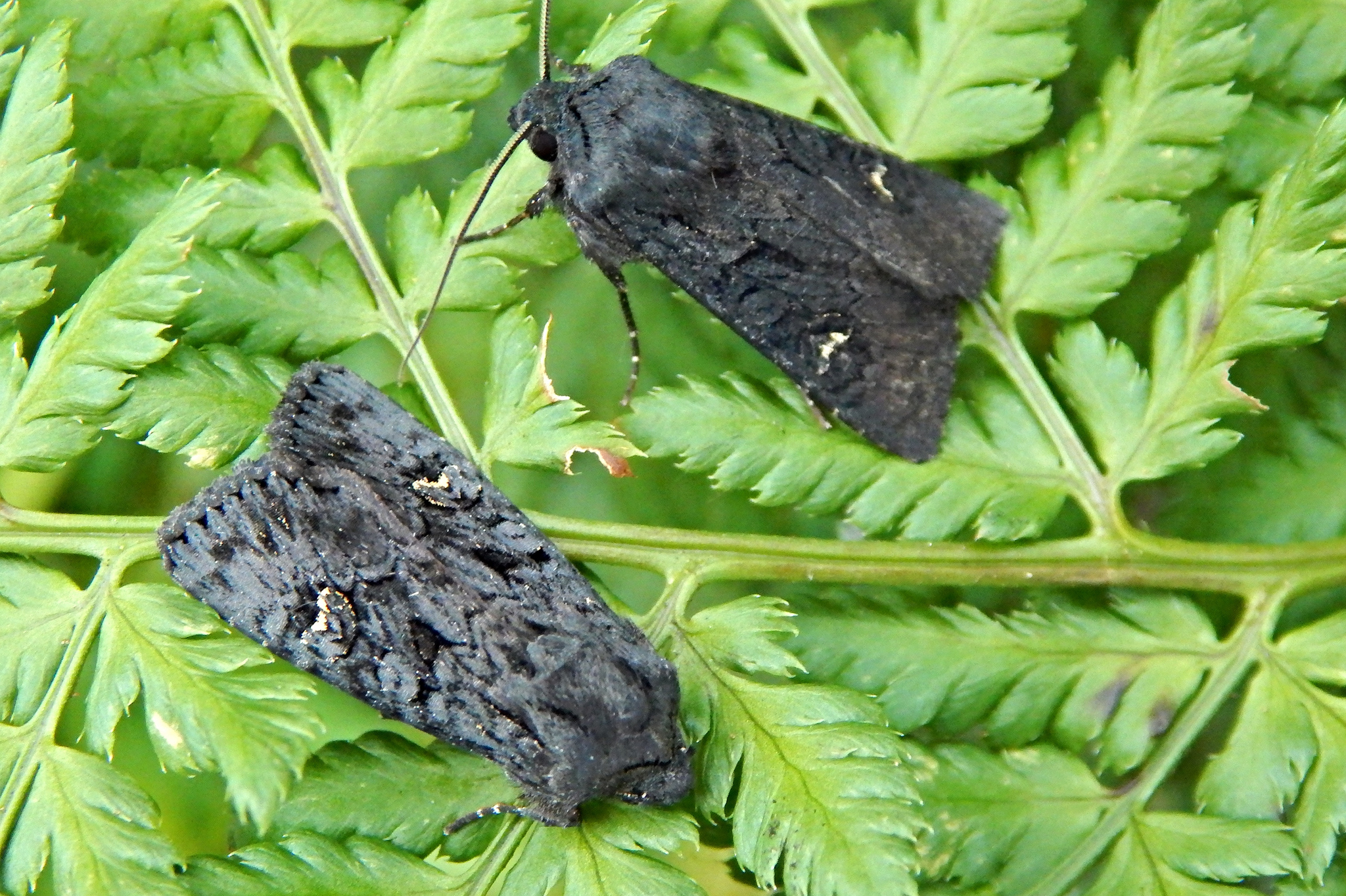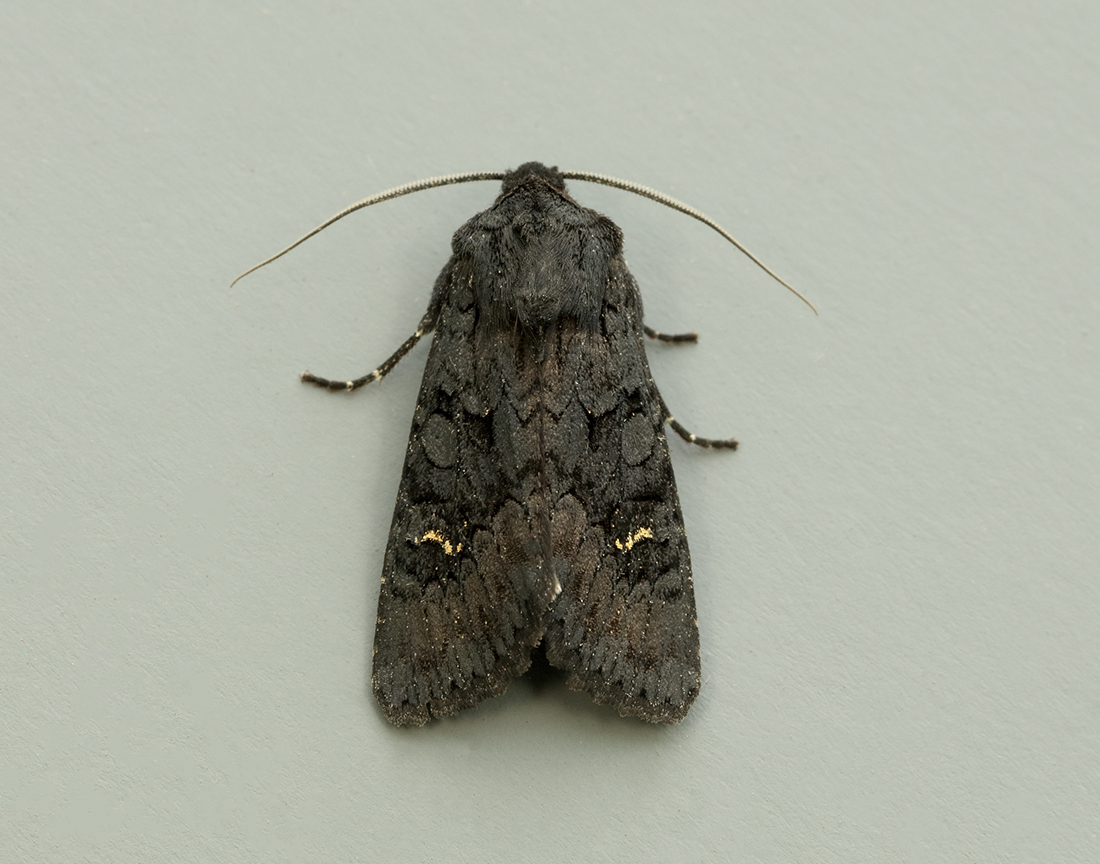See also Moth of the Week (14/09/2019).
Identification
Northern Deep-brown Dart is the confusion species but that species is never glossy black, nor does it have have the outer edge of the kidney mark highlighted white or cream.
Recording Method.
Attracted to light, also comes to sugar and flowers.
Life cycle
One generation. Overwinters as a small larva during October to May. Pupates underground.
Larval foodplants
Larvae feed on various herbaceous and woody plants.
Habitat
Rough, grassy places.
History
Gordon (1913) found it common at sugar at Corsemalzie, Wigtownshire, having obtained 67 between 22nd October 1897 and November 1909. One came to a window at Alticry on 10th September 1906. Evans (1915) in his survey of insect migration at Scottish Lighthouses received a female that had been captured by D. A. Mowat, keeper, at Killantringan Lighthouse, Wigtownshire, on 30th September 1913, two males and a female on 24th August 1914, followed by another male on 11th September 1915.
Sir Arthur Duncan (1909-84) during his lifetime had found it at Closeburn, Tynron and Castlehill, Dumfries (all VC72).
Five records occurred during the 1970s, one being from the Newton Stewart Rothamsted station. A further three records were recorded during the next decade. The second RIS record occurred in 1990 at Mabie Forest. Portable trapping from 1993-2010 produced a further 32 records from various sites.













